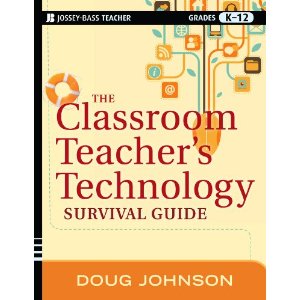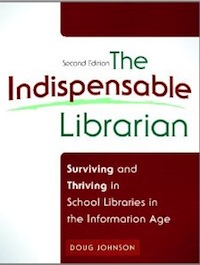The online librarian
The online librarian
HFE, Nov/DecDoug Johnson
Are you hearing these terms like flipped classrooms, hybrid classes, and Moodle in your school faculty meetings? Reading about them in blog posts and journal articles? Even taking online classes?
Chances are that if you’ve earned a college degree within the past ten years, you’ve experienced some form of online learning. What has been a mainstay in post-secondary education is rapidly making its way into the K-12 arena. The International Association for K-12 Online Learning (iNACOL) reports that enrollment in online classes in the past ten years has surged from 40,000 to 50,000 student to over 1,800,000 students1.
The terms “online learning” and “online education” cover a broad range of activities and opportunities including online classes that have little or no physical seat time, hybrid classes that have replaced just some physical attendance with online work, and blended classes that meet full time face-to-face like a regular classroom, but are augmented by formal, extensive online resources. One model of a blended classroom is the flipped classroom in which students watch recorded lessons outside of class and then use class time to discuss, apply, and clarify the content. MOOCs (Massive Open Online Courses) are a growing means of taking colleges courses online - mostly at no cost and for no credit. I’ll bet you already have some students and staff in your school who have at least started a MOOC.
Were I to make a brave prediction, I expect every classroom to have some online component in the very near future. Whether using social networking tools like Edmodo, a content manager for online resources and activities like Moodle, or just a webpage with links to digital supplemental materials for students and parents, every classroom K-12 will have an expected online component. And this trend will accelerate as more schools institute Bring Your Own Device or 1:1 initiatives, making student access to these materials 24/7.
If the library and librarian is to remain relevant in this changing school environment, we need to figure out our role - and soon. So how can we support online learning programs?
1. Provide access to quality online resource - both commercial and open source. In our district, we are replacing our 7th and 8th grade social studies textbooks with materials held or linked in our CMS - Moodle. Nationally, this as a growing trend since traditional textbook publishers can’t seem to figure out their pricing and support model and teachers aren’t willing to wait until they do. Teachers who once would have turned to a textbook chapter and commercial worksheets are now looking diligently for readings, for multimedia titles, for activities, for lessons, and even for whole courses for their classes. As information experts in our buildings, we should be able to help teachers locate materials that specifically support their courses and objectives, often at a variety of reading and ability levels to support differentiated instruction.
One area we should focus on is materials that are free for teachers and students to use without violation of copyright law. Librarians need to be familiar with open source software, textbooks, video, courses, music, images, e-books, and lectures. We can point curriculum developers to Creative Commons search engines and materials. It’s pretty amazing how much high quality material is available - if you know where to look.
2. Becoming the guru in how digital content holders work and can be used. In keeping with their role as our building’s technology integration specialists, our librarians are the go-to people for learning how to use Moodle, Edmodo, GoogleSites, and other tools teachers use to provide online content and instructional activities. One great way they’ve done this is to create their own lessons and activities using these tools. Moodle can provide a great means of conducting a virtual book club, even at the elementary level. Much of our professional development related to using new technology resources has moved online - lessons created by building librarians.
3. Becoming a “virtual learning commons (VLC).” Visionaries Loertscher, Koechlin, and Rosenfeld suggest that the library’s online presence become “… a digital learning community in which the whole school participates.” Where “both the instructors and the students of the school collaborate to establish the VLC as a place where individuals and groups are actively learning, communicating, and building together in real time.” The authors provide a template that includes five main “portals” - Information Center, Literacy Center, Knowledge Building Center, School Culture and Experimental Learning Center. Establishing a VLC will take work, leadership and bravery, but just might well cement the indispensability of both the library and professional librarian to the school.
While the effectiveness of online education remains uncertain, its popularity will continue to grow. Online classes can provide students courses not available locally. They can provide learning opportunities at times most convenient to those who are busy. And generally, online learning is a school experience agreeable to this “Net” Generation.
Librarians, are you supporting your staff and students both physically and virtually?
1. iNACOL, “Fast Facts About Online Learning”, February 2013 <http://www.inacol.org/cms/wp-content/uploads/2013/04/iNACOL_FastFacts_Feb2013.pdf>
2. Loertscher, David, Carol Koechlin and Esther Rosenfeld, The Virtual Learning Commons, Learning Commons Press, 2012





Reader Comments